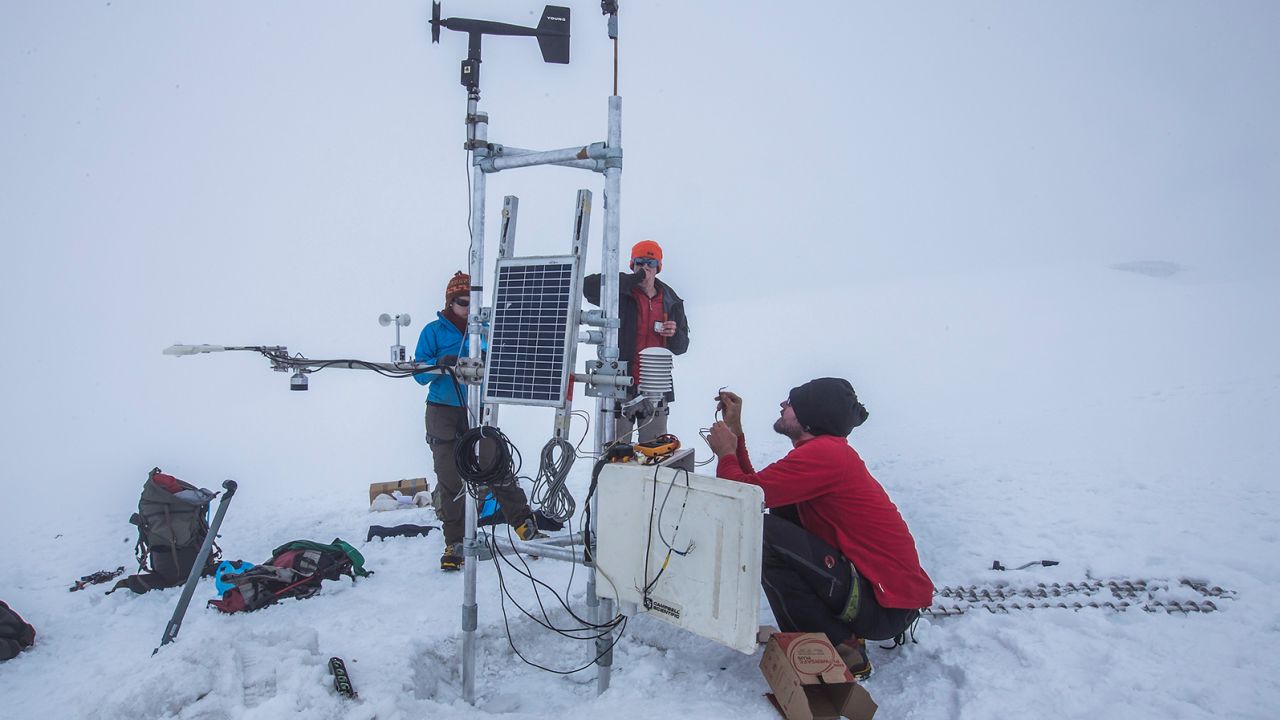
The report, published Tuesday by the International Centre for Integrated Mountain Development (ICIMOD), examined the impact of climate change on an area stretching 1.6 million square miles (4.1 million square kilometers) from Afghanistan in the west to Myanmar in the east.
The report found that glaciers in the Hindu Kush and Himalaya mountain range region melted 65 percent faster in the 2010s compared with the previous decade, which suggests higher temperatures are already having an impact.
Ice and snow in the region feeds 12 rivers that provide freshwater to two billion people in 16 countries, including China, India and Pakistan, and eventually too much water will eventually lead to too little, the report warns.
The same group published a report in 2019, which found that even in the most optimistic case, where average global warming was limited to 1.5 degrees Celsius above pre-industrial temperatures, the region would lose at least one third of its glaciers.
The group’s updated report shows those projections have since worsened.
With between 1.5 to 2 degrees Celsius of warming, the world’s highest mountain region stands to lose 30 percent to 50 percent of its volume by 2100, the latest report said.
If the world breaches 3 degrees Celsius of warming, glaciers in Nepal and Bhutan in the eastern Himalayas are at risk of losing 75 percent of their ice, and by just one degree more, that ticks up to 80 percent, according to the report.
The annual mean global near-surface temperature for each year between 2023 and 2027 is predicted to be between 1.1 degrees Celsius and 1.8 degree Celsius higher than the 1850-1900 average, according to the World Meteorological Organization
Scientists consider 1.5 degrees of warming as a key tipping point, beyond which the chances of extreme flooding, drought, wildfires and food shortages could increase dramatically.
“In all three pillars of climate action – in mitigation, adaptation and loss and damage – we are at a standstill or going the wrong way; while the consequences of inaction are accelerating by the day,” Prof. Saleemul Huq, director of the International Centre for Climate Change and Development in Bangladesh was quoted as saying in the report.

Rapid warming and glacial melt
About 240 million people live in the Hindu Kush Himalaya region, many of their cultures dating back thousands of years, and another the 1.65 billion live downstream.
Many high mountain communities depend on glacial waters to irrigate crops and to maintain their livestock, but the accelerated melting would inundate farmlands downstream followed by periods of drought as water sources dry up, the report said.
The erosion of glacial slopes also heightens the likelihood of floods, landslides and avalanches, increasing the risk to millions living in mountain communities.
“For them, this is home, and their livelihoods are mostly dependent on agriculture, livestock, tourism, and medicinal and aromatic plants,” report co-author Amina Maharjan, a senior specialist in livelihoods and migration at ICIMOD.
“What we realized in doing this assessment is that all of these are very, very sensitive to slight changes in climatic conditions and cryospheric conditions in the region,” she said.
For example, snowfall patterns are increasingly out of sync with seasonality, blanketing pastures and shrinking the grazing land for livestock, Maharjan explained. Over the past half decade, yaks have died due to a lack of food in India, Nepal and Bhutan, leaving farmers with huge income loses, she added.
The remoteness and rough terrain of the region also means that mountain communities often lack access to immediate disaster response.
“The glaciers of the Hindu Kush Himalaya are a major component of the Earth system. With two billion people in Asia reliant on the water that glaciers and snow here hold, the consequences of losing this cryosphere are too vast to contemplate. We need leaders to act now to prevent catastrophe,” said Izabella Koziell, deputy director general of the ICIMOD.
Unique species are also threatened by adverse changes to the climate of the diverse ecosystems that include tropical and subtropical rainforests, temperate coniferous forest and cold deserts, the report said.
Fourteen species of butterflies have already become extinct from the Murree Hills of Pakistan, according to the report, while endemic frog species are among the most impacted by climate change as they experience breeding problems and developmental deformities.




